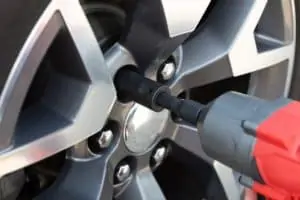
My last communication, “The OEMS can compete in the Aftermarket”, focused on the OEMs, and the perceptions that detract from their competitive advantages. Today, I will expand this conversation to include the attitudes and perceptions that reduce suppliers to a role as minor contributors to the OE/ dealership service drive experience. This is counterproductive to what is required to create a successful service drive experience. Here’s why.
My insights are borne out of personal experience at Toyota, and are consistent with academic research pioneered by John W. Henke, Jr., PHD. Dr. Henke is the President and CEO of Planning Perspectives, a Birmingham, MI, Global Consulting firm specializing in company-supplier working relationships. Dr Henke’s research shows that OEMs could make hundreds of millions of dollars more annually if they simply did a better job partnering with their suppliers. At Toyota, we turned this theory into dollars by doing just that.
OEMs leverage their factory volume to pressure suppliers to produce Genuine parts at rock-bottom prices. In some cases, these parts are then picked up, warehoused, and distributed via an internal infrastructure that adds costs; in other cases, the supplier is instructed to deliver the parts directly to the dealership. For OEM’s these two models represent almost the totality of the OEM-supplier relationship. At Toyota, we invested in a third model, one that allowed the supplier to secure a reasonable margin but required them to fully-engage in the business.
There are 3 consistent features that apply to OE parts suppliers:
- They understand that sales through OEMs and dealers do not meet the total demand in the channel.
- They possess underutilized competencies that can be used to meet more of the demand.
- They want to sell more parts.
Bullet number 2 represents the value missed by most OEMs but exploited by Toyota. The desire to sell more (bullet 3) is universal, but most OEM contracts make it difficult or impossible for suppliers to make the necessary investments or contributions, and the Psychology of Not prevents OEMs from expanding their vision beyond product and price. Together, these circumstances conspire to limit the:
- Supplier-OEM collaboration
- Amount of support dealers obtain
- Effectiveness of dealers to address customer needs
At Toyota we were very good at identifying and acknowledging our strategic weaknesses and developing the partnerships necessary to deploy cost effective, sustainable solutions. In 2000, we recognized the need for a Tire Program and went about developing one that centered on long-term dealer requirements, rather than short-term corporate needs. The success of this model led to the inclusion of other strategic maintenance care parts (batteries, brakes, chemicals, oil, and wipers) in 2008. Each effected supplier was asked to contribute their resources and competencies towards the larger vision (to facilitate the dealer’s ability to service customer maintenance needs) and did so willingly, not just because Toyota asked but because it made sound business sense. The results, 180%-dollar growth over 9 years, speak to the power of supplier participation.
The Toyota example is not necessarily transferable as-is to all OEMs, but it’s principal foundation, what we call the Fixed Ops Triad is a great place to start. It aligns OEM, Supplier, and Dealer attention on the processing of maintenance business. Like all potential change, implementing solutions that work is not easy or quick. The OEMs did not lose their market presence overnight and it will not be reestablished any time soon. But, if you want your parts and service business to remain viable, either as an OEM or a supplier, the sooner you start, the sooner you will realize benefits.






